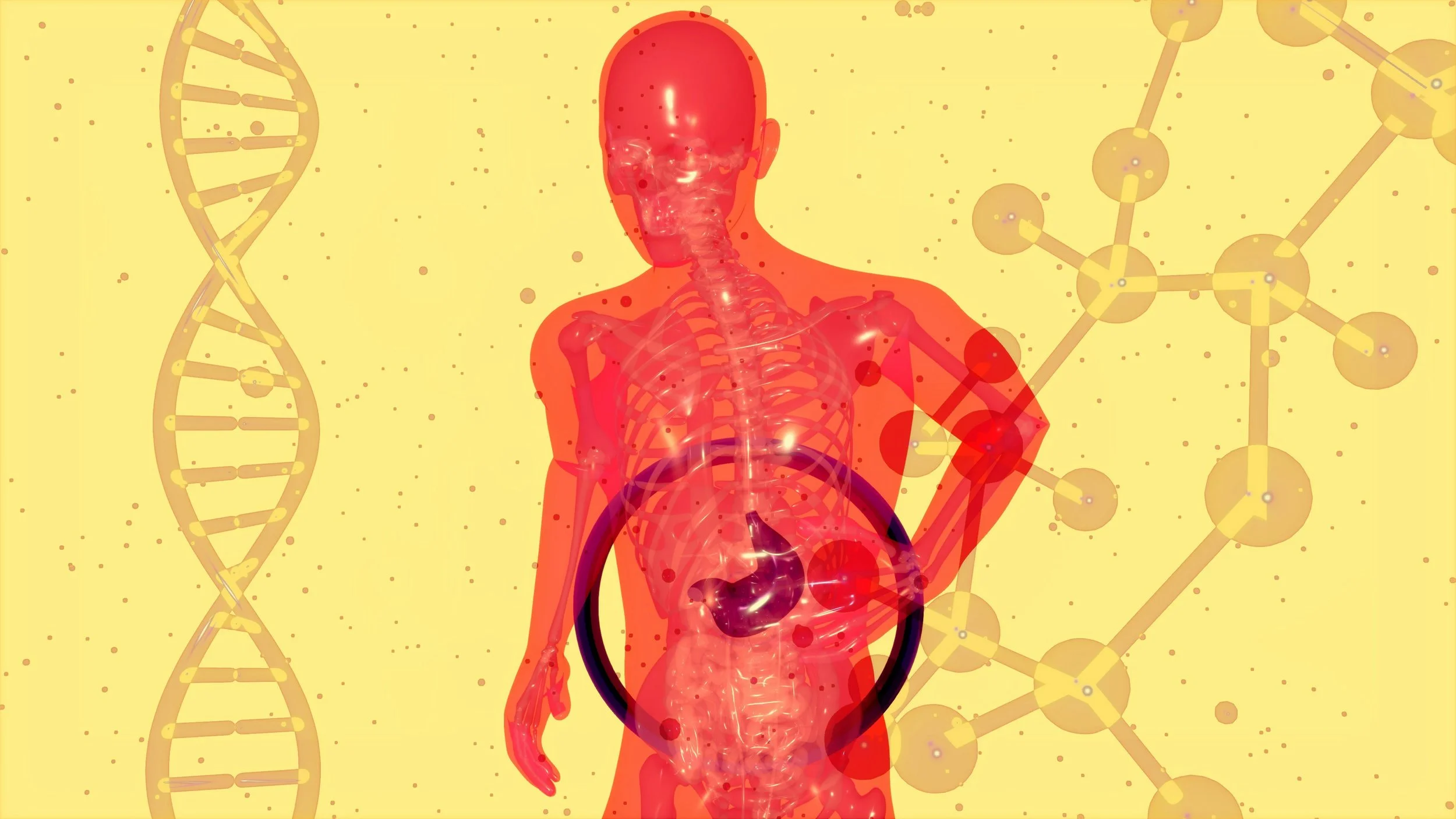Nancy’s Story: From 15 Months of GI Frustration to a Calmer, Stronger Gut
When Nancy walked into our program, she looked like the picture of health on paper: a very active 53-year-old mom training five days a week, tracking her macros, and drinking 120+ ounces of water a day. But she’d been battling relentless gut issues—especially chronic diarrhea and uncomfortable bloating—for nearly 15 months. She’d already seen about five specialists (including functional medicine clinicians), completed extensive bloodwork and gut-microbiome panels, had an ultrasound, and even undergone a colonoscopy that revealed microscopic colitis.
Despite all of that, nothing changed. She tried the candida diet—no improvement. She was prescribed medications, including ivermectin, pancreatic enzymes (Zenpep), and a steroid (budesonide)—still no lasting relief. Probiotics and “gut health” supplements? They actually made things worse.
Step One: Slow Down to Speed Up
Our first move wasn’t to add more; it was to simplify. Complex plans and supplement “stacks” can keep symptoms bouncing around so much that you never learn what’s really helping.
Food, simplified and tested. We removed the usual inflammation triggers and created a clean baseline of foods that were easy to digest and simple to track. From there, we tested one food group at a time, watching for a 24–72 hour response in stool consistency, bloating, energy, and training tolerance. This wasn’t a forever restriction—it was a short, structured discovery process to identify her personal tolerances.
Supplement reset. We put away the laundry list of pills and powders. Instead, we used a small, targeted set of evidence-based options at the right timing and doses. No megadoses, no “kitchen sink” blends—just the essentials that supported the plan without stirring up the gut.
Sleep as a lever for gut healing. Nancy started tracking sleep quality and duration. We made a few high-impact changes (consistent sleep timing to optimize circadian rhythm, smarter habits around screens, light and temperature tweaks, and a wind-down routine). Better sleep reduces stress hormones and calms the gut’s immune response—crucial for someone with inflammation on biopsy.
Step Two: Add What the Gut Actually Uses
Once symptoms started to settle, we added specific whole foods that nourish the microbiome and the gut lining—introduced gradually and only as tolerated. Think: consistent fiber from whole foods (not big swings), gentle pre and probiotic sources, and strategically prepared foods that are easier on digestion. The goal wasn’t to “biohack” the gut; it was to feed it well, consistently, and let the ecosystem stabilize.
Step Three: Keep Training—But Match It to Recovery
Nancy loved training, and we wanted to keep it that way. We dialed down intensity and focused on low stress workouts that kept her strong and fit without piling stress on an already taxed system. The result: she stayed active without constantly poking the bear.
Four Months Later: A Different Person
At the end of four months, Nancy’s results were exactly what she’d hoped for when she first set out on this journey:
Complete resolution of her GI issues: diarrhea, bloating, and discomfort were gone.
Energy back—plus some. She reported steady, all-day energy instead of the roller coaster.
Better performance in the gym. With a calmer gut and better recovery, her sessions were stronger and more enjoyable.
Long-term health gains. We also reviewed her bloodwork and identified specific opportunities for health optimization. With a few targeted changes, she lowered her long-term chronic-disease risk while feeling great day-to-day.
What Made the Difference
Personalized, not trendy. The candida diet and generic gut stacks didn’t match her physiology. Our elimination-and-rebuild approach did.
Less noise, more data. By simplifying and reintroducing stepwise, we finally got clear signals about what helped or hurt.
Foundations first. Sleep, recovery, and consistent whole-food nutrition created the conditions for the gut to heal.
Smart supplementation. A few well-chosen essentials beat a cabinet full of pills—especially when your gut is already irritated.
Takeaways if You’re in Nancy’s Shoes
Start with clarity. A short, structured elimination with careful reintroductions can tell you more in four weeks than four more supplements ever will.
Tread lightly with probiotics. They’re not all created equal, and many cause more problems than they solve.
Protect your sleep. Your gut has its own nervous and immune systems—sleep is powerful for calming things down and promoting gut microbiome stability.
Train with the grain. Keep moving, but drop the unnecessarily stressful workouts while allowing your body to heal.
Use labs wisely. Bloodwork can reveal upstream opportunities (nutrient status, metabolic patterns, inflammation) that support long-term results—not just symptom control.
Nancy didn’t get better by trying harder—she got better by getting clearer. If you’ve been stuck in the gut-health maze—multiple opinions, lots of tests, and no real relief—there’s another way: make the plan simpler, make the measurements smarter, and let your body show you what works.
If you’re ready for a structured, hands-on process like Nancy’s, let’s talk. We’ll map a clean starting point, test your tolerances, and build the simplest plan that actually works for you.
Note: This story reflects one client’s experience. It isn’t medical advice and isn’t a substitute for care from your physician—especially if you’ve been diagnosed with conditions like microscopic colitis.

